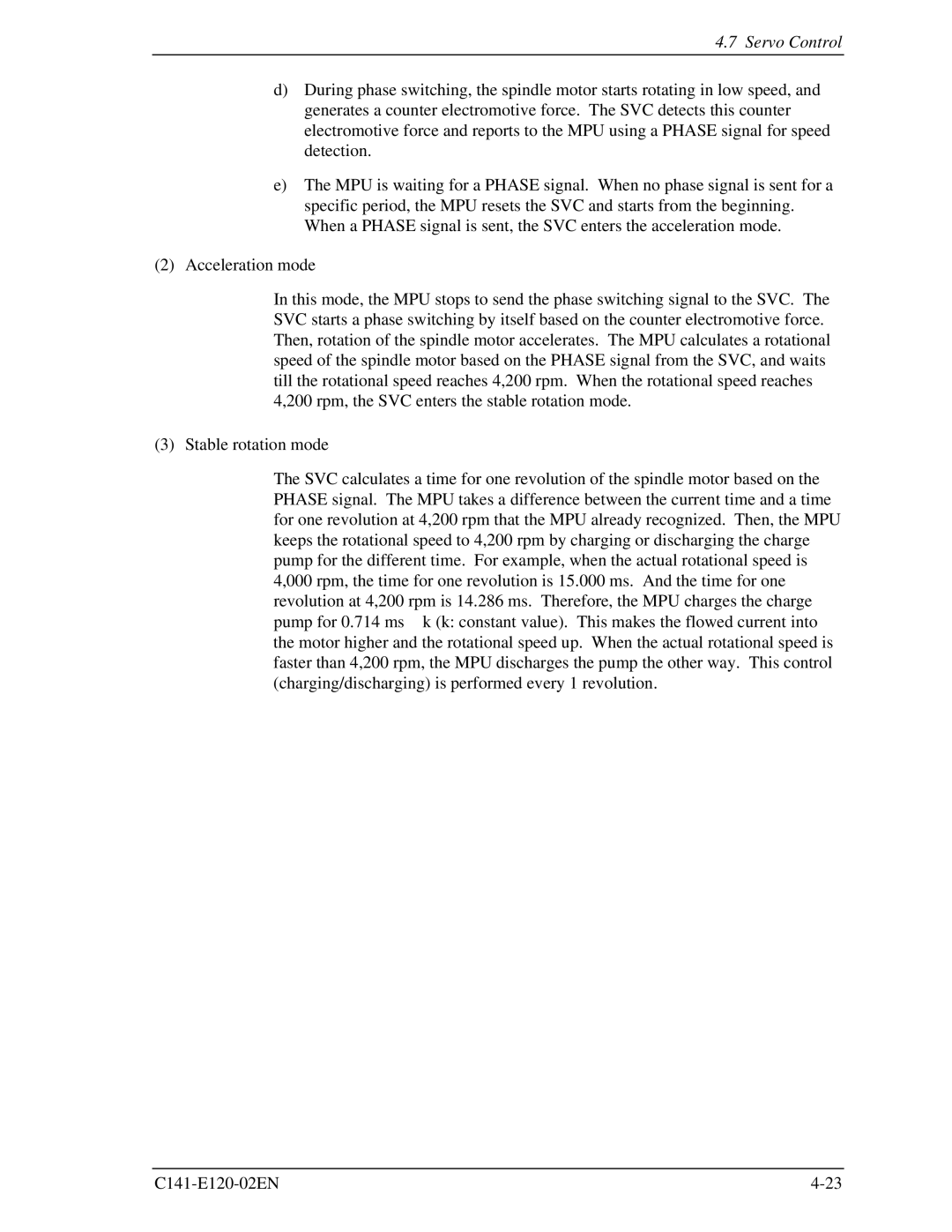
4.7 Servo Control
d)During phase switching, the spindle motor starts rotating in low speed, and generates a counter electromotive force. The SVC detects this counter electromotive force and reports to the MPU using a PHASE signal for speed detection.
e)The MPU is waiting for a PHASE signal. When no phase signal is sent for a specific period, the MPU resets the SVC and starts from the beginning. When a PHASE signal is sent, the SVC enters the acceleration mode.
(2) Acceleration mode
In this mode, the MPU stops to send the phase switching signal to the SVC. The SVC starts a phase switching by itself based on the counter electromotive force. Then, rotation of the spindle motor accelerates. The MPU calculates a rotational speed of the spindle motor based on the PHASE signal from the SVC, and waits till the rotational speed reaches 4,200 rpm. When the rotational speed reaches 4,200 rpm, the SVC enters the stable rotation mode.
(3) Stable rotation mode
The SVC calculates a time for one revolution of the spindle motor based on the PHASE signal. The MPU takes a difference between the current time and a time for one revolution at 4,200 rpm that the MPU already recognized. Then, the MPU keeps the rotational speed to 4,200 rpm by charging or discharging the charge pump for the different time. For example, when the actual rotational speed is 4,000 rpm, the time for one revolution is 15.000 ms. And the time for one revolution at 4,200 rpm is 14.286 ms. Therefore, the MPU charges the charge pump for 0.714 ms ⋅ k (k: constant value). This makes the flowed current into the motor higher and the rotational speed up. When the actual rotational speed is faster than 4,200 rpm, the MPU discharges the pump the other way. This control (charging/discharging) is performed every 1 revolution.
